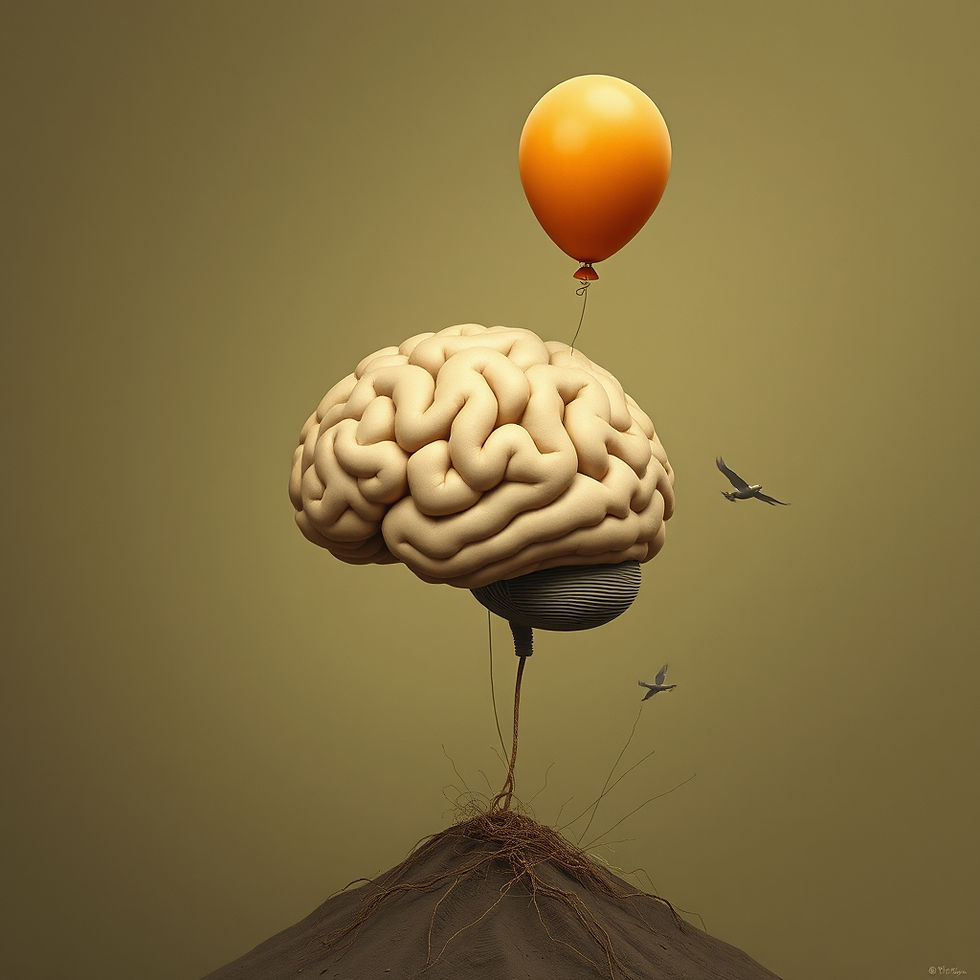Does the brain grow in size when we learn?
- Stephanie Dodier B.Ed. MA

- Nov 3
- 3 min read
Synopsis:
Many headlines claim that certain activities (like meditation) can “make your brain grow.” But what does that really mean? In this post, we unpack a common neuromyth about brain growth and explain what’s actually happening inside the brain when we learn. Drawing on research from Harvard neuroscientist Sara Lazar and others, we explore how learning doesn’t make the brain bigger, but rather better connected. The result? A powerful reminder that our brains remain flexible, adaptable, and capable of change throughout life… no matter our age!

I recently came across this article by Harvard researchers titled “Meditation found to increase brain size”. I find this title misleading and let me share with you why.
First, a little bit of context. A team of researchers led by Sara Lazar found that adults with long-term meditation “increase their brain size” in areas related to attention, sensory processing, and emotional regulation compared to non-meditators.

When studies like Lazar et al. (2005) report that the brain “grows”, they’re not saying that new brain cells are being added (like a balloon getting bigger). Instead, they’re describing structural changes in the density and complexity of neural connections mainly in-between neurons.
What is the neuroscience saying?
Here’s what’s actually happening:
Neurons don’t multiply much after childhood, but they grow new branches (dendrites) and strengthen existing connections when we learn.
When many neurons in one region do this, that area can appear thicker or denser on brain imaging, such as MRI.
The “growth” seen in studies like the Harvard meditation research reflects more robust networks, not a bigger brain overall.

So, both statements are true but it’s just about what kind of growth we’re talking about.
The brain doesn’t grow in size,
But its structure changes, often showing up as increased cortical thickness because there are more or stronger connections.
Conclusion
In other words, what MRI captures as “thickness” is really the visible trace of learning and plasticity which is proof that the brain’s wiring keeps evolving throughout life.
This study provided early evidence that adult brains remain capable of structural change, supporting the idea that learning and experience continue to shape the brain throughout life. Age is not a limit on learning!
FAQ section:

Q: When scientists say the brain “grows,” are they talking about new brain cells?
A: Not exactly. What MRI scans show as “growth” usually reflects denser or more complex connections between existing neurons, not an increase in the number of brain cells.
Q: So, what actually changes when we learn something new?
A: Neurons build new branches (dendrites) and strengthen existing pathways. When many neurons do this in one region, that area can look thicker or more active on a brain scan.
Q: Does this mean adults can keep changing their brains?
A: Absolutely! Studies like Lazar et al. (2005) show that even in adulthood, learning and experiences (like meditation, new skills, or focused practice) can reshape the brain’s structure.
Q: So… does the brain really grow?
A: The brain doesn’t grow in size, but it evolves in structure. Learning doesn’t make your brain bigger. It makes your connections stronger and more efficient.
Article cited:
Lazar, S. W., Kerr, C. E., Wasserman, R. H., Gray, J. R., Greve, D. N., Treadway, M. T., … Benson, H. (2005). Meditation experience is associated with increased cortical thickness. NeuroReport, 16(17), 1893–1897. https://news.harvard.edu/gazette/story/2006/02/meditation-found-to-increase-brain-size/




Comments